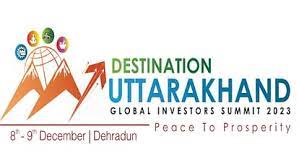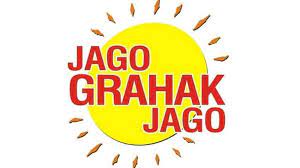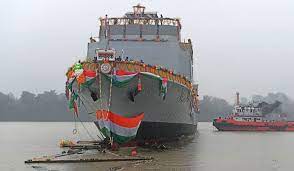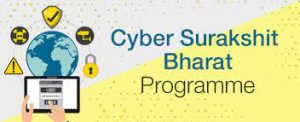Today’s Current Affairs: 7th Dec 2023 for UPSC IAS exams, State PSC exams, SSC CGL, State SSC, RRB, Railways, Banking Exam & IBPS, etc
Table of Contents
India Auctions 20 Critical Mineral Blocks:

India has initiated the auction of 20 blocks containing critical minerals, including lithium, essential for batteries and electric vehicles.
- The auction began on November 29, involves lithium-rich blocks and other critical minerals like nickel, copper, and rare earth elements.
- The estimated total value of these blocks is Rs 45,000 crore, marking the first time rights for mining lithium ore are auctioned to private parties.
- The 20 blocks are distributed across eight states: Tamil Nadu, Odisha, Bihar, Uttar Pradesh, Gujarat, Jharkhand, Chhattisgarh, and Jammu & Kashmir. Understanding where these mineral-rich blocks are located is crucial for comprehending the scope of India’s mineral exploration.
- Out of the 20 blocks, only four are auctioned for a Mining License (ML), allowing immediate mining operations after obtaining necessary clearances.
- The remaining 16 blocks are auctioned for a Composite License (CL), permitting geological exploration before converting to an ML.
- The auction includes two lithium blocks in Jammu & Kashmir and Chhattisgarh, each holding substantial inferred reserves. Nickel, copper, molybdenum, and rare earth elements are also found in these blocks, contributing to India’s strategic reserves.
UNEP Report On Sustainable Cooling:

A new report from the United Nations Environment Programme (UNEP) suggests that implementing measures for sustainable practices in the global cooling sector could significantly reduce predicted 2050 greenhouse gas emissions by 60%.
- The cooling sector, responsible for 20% of electricity use, plays a crucial role in addressing rising temperatures, ensuring food quality, maintaining vaccine stability, and sustaining productive economies.
- Its current trajectory poses a threat, with installed cooling equipment expected to triple, resulting in a more than doubling of electricity consumption by 2050.
- The Global Cooling Watch Report recommends various action plans to address the challenges, including passive cooling methods (such as cool roofs and natural shading), higher energy efficiency standards, and a faster phasedown of climate-warming refrigerants and air conditioning.
- Passive cooling and efficient equipment are projected to save consumers $17 trillion in 2022-2050.
- These measures could reduce peak power requirements, avoiding substantial power generation investments
Uttarakhand Global Investors Summit 2023:

Dehradun is preparing to host the Global Investors Summit on December 8-9, anticipating the participation of 5,000 delegates from India and abroad.
- The summit is geared towards showcasing investor-friendly policies, good governance, and sustainable practices.
- Prime Minister Narendra Modi is set to officially open the summit at the Forest Research Institute on December 8.
- The summit’s framework, ‘Destination Uttarakhand,’ draws inspiration from the Vibrant Gujarat model.
- The summit seeks to foster collaboration between exhibitors, private enterprises, and government organizations, providing a platform to showcase advanced technologies, innovations, and upcoming trends. Sectoral sessions will facilitate in-depth discussions on industry challenges and opportunities.
Garba Of Gujarat : Intangible Cultural Heritage

The vibrant and culturally rich dance form, ‘Garba of Gujarat,’ has earned a prestigious place in the Representative List of Intangible Cultural Heritage (ICH) of Humanity by UNESCO.
- The recognition was formalized during the 18th meeting of the Intergovernmental Committee for the Safeguarding of Intangible Cultural Heritage held from 5th to 9th December, 2023, in Kasane, Botswana.
- The dance form’s significant role as a unifying force, promoting social and gender inclusivity. Rooted in ritualistic and devotional traditions, Garba brings together individuals from diverse backgrounds, thriving as a vibrant living tradition that fosters community cohesion.
- The UNESCO 2003 Convention’s Listing mechanism aims to enhance the visibility of intangible cultural heritage, raise awareness of its significance, and promote dialogue that respects cultural diversity.
Jago Grahak Jago Campaign:

The Department of Consumer Affairs is actively engaged in nationwide multimedia awareness campaigns titled “Jago Grahak Jago”.
- These campaigns aim to inform consumers about fraudulent practices and common issues while providing guidance on seeking redressal
- The awareness initiatives utilize various media platforms, including print media, TV, radio, cinema theatres, websites, hoardings, and display boards.
- To reach people in rural and backward areas, the Department actively participates in fairs, festivals, and events across different states and union territories.
- To enhance awareness at the grassroots level, the Department releases Grant-in-Aid to States and UTs for conducting consumer awareness activities with a focus on local content.
- The Central Government provides financial assistance under the scheme ‘Strengthening Consumer Commissions’ to enhance the infrastructure of Consumer Commissions at the District and State levels.
Survey Vessel : Sandhayak

The first of four Survey Vessel (Large) ships, Sandhayak, constructed at Garden Reach Shipbuilders & Engineers (GRSE) in Kolkata, was delivered to the Indian Navy.
- Purpose Intended for full-scale coastal and deep-water hydrographic surveys of port and harbour approaches, determining navigational channels and routes.
- The zone of operation includes maritime limits up to the Exclusive Economic Zone (EEZ) and the extended continental shelf.
- The ships have the capability to collect oceanographic and geophysical data for defence and civil applications.
Hydrographic Equipment Equipped with advanced hydrographic equipment, including: – Data Acquisition and Processing System – Autonomous Underwater Vehicle – Remotely Operated Vehicle – DGPS Long-range positioning systems – Digital side-scan sonar - Propulsion Propelled by two diesel engines.
- Speed Capable exceeding 18 knots.
- The ship boasts over 80% indigenous content by cost.
- The delivery of Sandhayak highlights the commitment of the Indian government and navy to ‘Aatma Nirbhar Bharat’ (Self-reliant India).
Fake MGNREGS Job Cards Deleted:

Over 10 lakh job cards have been deleted with the reason ‘fake job card’ under the Mahatma Gandhi National Rural Employment Guarantee Scheme (MGNREGS) in the last two financial years 2021-22 and 2022-23.
- As per Section 25 of the Mahatma Gandhi National Rural Employment Guarantee Act, 2005, whoever contravenes the provisions of this Act shall on conviction be liable to a fine which may extend to one thousand rupees.
- The highest number of fake job cards have been deleted in Uttar Pradesh and followed by Madhya Pradesh in 2021-22, and 2022-23.
- MGNREGS was launched by the Ministry of Rural Development to guarantee 100 days of employment in every financial year to adult members of any rural household willing to do public work-related unskilled manual work.
Snakebite Envenoming:

A team of experts from a United Kingdom university have set up a pilot study in Burujhari village in Odisha, India to help it reduce the number of fatalities from Snakebite Envenoming (SE) and will look into solutions like an Early Warning System for snakes.
- India has the biggest burden of deaths due to Snake Bites in the world, with most of the cases in rural India.
- WHO (World Health Organization) formally listed Snakebite Envenoming as a highest-priority Neglected Tropical Disease (NTD) in June 2017.
- Snakebites Envenoming is a potentially life-threatening disease that typically results from the injection of a mixture of different toxins (venom) following the bite of a Venomous Snake and can also be caused by having venom sprayed into the eyes by certain species of snakes that have the ability to spit venom as a defence measure.
- Snakebite poses a significant daily health risk in rural tropical and subtropical regions of Africa, the Middle East, Asia, Oceania, and Latin America, particularly for the hundreds of millions of people in rural and peri-urban communities reliant on agriculture and subsistence activities for survival
- Many snakebite victims, mostly in developing countries, suffer from long-term complications such as deformities, contractures, amputations, visual impairment, renal complications and psychological distress.
- According to the World Health Organization (WHO), around 81,410 to 137,880 people around the world die each year because of snakebites.
- WHO launched its roadmap in 2019 with an aim to halve death and disability from snakebite by 2030.
- In order to create a sustainable market for antivenoms there is a need for a 25% increase in the number of competent manufacturers by 2030.
- WHO has planned a pilot project to create a global antivenom stockpile.
- Integrating snakebite treatment and response into national health plans in affected countries, including better training of health personnel and educating communities.
The Global Climate 2011-2020: A Decade Of Acceleration

The World Meteorological Organisation (WMO) has published a report titled- The Global Climate 2011-2020: A Decade of Acceleration, concerning the alarming acceleration of climate change and its multifaceted impacts across the planet.
Highlights of the Report:
- The decade 2011-2020 emerged as the warmest on record for both land and ocean.
- Global mean temperature soared to 1.10 ± 0.12 °C above the 1850-1900 average, with each decade since the 1990s surpassing previous ones in warmth.
- Record high temperatures were reported in numerous countries, with 2016 (due to an El Niño event) and 2020 standing out as the warmest year.
- Atmospheric concentrations of major greenhouse gases (GHG) continued to rise, especially CO2, reaching 413.2 ppm in 2020, primarily due to fossil fuel combustion and land-use changes.
- The decade witnessed an increase in average growth rates of CO2, highlighting the pressing need for sustainable emissions reduction to stabilize the climate.
- Ocean warming rates accelerated significantly, with 90% of accumulated heat stored in the ocean. Warming rates doubled in the upper 2000m depth from 2006-2020, impacting marine ecosystems.
- Ocean acidification due to CO2 absorption posed challenges for marine organisms, affecting their shell and skeleton formation.
- Marine Heatwaves increased in frequency and intensity, affecting about 60% of the ocean’s surface between 2011 and 2020.
- Global mean sea level rise accelerated to 4.5mm/yr from 2011-2020, mainly due to ocean warming and ice mass loss.
- Glaciers globally thinned by about 1 meter/year between 2011 and 2020, with unprecedented mass loss, affecting water supplies.
- Greenland and Antarctic ice sheets lost 38% more ice compared to 2001-2010, contributing significantly to rising sea levels.
- Arctic sea ice continued its decline during the summer melt season, with a mean seasonal minimum extent 30% below the 1981-2010 average.
- The Antarctic ozone hole diminished in the 2011-2020 period, credited to successful international action under the Montreal Protocol.
- Efforts led to reduced chlorine entering the stratosphere from ozone-depleting substances.
- Extreme weather events hindered progress toward SDGs, impacting food security, human mobility, and socioeconomic development.
- Improved early warning systems reduced casualties but economic losses from extreme events escalated.
- The 2011-2020 decade was the first since 1950 when there was not a single short-term event with 10,000 deaths or more.
Cyber Surakshit Bharat Initiative:

The National e-Governance Division (NeGD) recently organised the 40th Chief Information Security Officers (CISOs) Deep-Dive training programme under the Cyber Surakshit Bharat Initiative.
- Cyber Surakshit Bharat Initiative is an initiative of the Ministry of Electronics and Information Technology (MeitY), Government of India.
- It was conceptualised with the mission to spread awareness about cybercrime and build the capacities of Chief Information Security Officers (CISOs) and frontline IT officials across all government departments.
- It is an initiative to fortify the cyber security system in India with regard to the Government’s vision of a Digital India.
- It was launched in cooperation with the National e-Governance Division (NeGD) and various industry partners in India.
- It can be entitled as the first public-private enterprise of its kind.
- The partners involved in the origination of this scheme include chief IT companies like Intel, Microsoft, etc.
- It will be operated on three principles: education, awareness, and enablement.
- It will comprise a program of awareness on the importance of cybersecurity.
- The scheme will also include a number of workshops on the best enablement and practices of the officials with cybersecurity health tool kits for the management and mitigation of cyber threats.
Painganga River : Protest Against a Proposed Dam Project

Protests were staged against a proposed dam project on the Painganga river in the Vidarbha region of Maharashtra recently.
- Painganga River is the chief river of the Yavatmal district in Maharashtra and flows along the south-east boundaries of the district in a winding, meandering course.
- It originates in the Ajantha ranges in Aurangabad district in Maharashtra.
- It is a major tributary of the Wardha River, the other major river in the district.
- The Wardha River flows into the Wain Ganga Riverto form the Pranhita River, which finally joins the Godavari River.
- It is acutely deep-rooted and difficult to navigate.
- The total length of the river is 676 km.
- Major Tributaries: Include the Adan, Kas, Arunavati,Kayadhu, and Pus Rivers.
- The Penganga River gets flooded in the rainy and winter seasons and partially flooded in the summer.
- It provides irrigation to the Washim and Yavatmal districts in Maharashtra.
- There are two dams being constructed on the river, namely Upper Painganga and Lower Painganga.
- This dam is also known as Isapur Dam.
Pompe Disease : Study

India’s first patient diagnosed with the Pompe disease died after spending nearly six years in a semi-comatose state.
- Pompe disease is a rare inherited disorder that affects one child per million.
- Causes mutations in the GAA gene cause Pompe disease.
- The GAA gene provides instructions for producing an enzyme called acid alpha-glucosidase (also known as acid maltase).
- This enzyme is active in lysosomes, which are structures that serve as recycling centres within cells.
- The enzyme normally breaks down glycogen into a simpler sugar called glucose, which is the main energy source for most cells.
- Mutations in the GAA gene prevent acid alpha-glucosidase from breaking down glycogen effectively, which allows this sugar to build up to toxic levels in lysosomes.
- This buildup damages organs and tissues throughout the body, particularly the muscles, leading to the progressive signs and symptoms of Pompe disease.
- Some common side effects and symptoms include muscle weakness, respiratory issues, heart problems and difficulty swallowing.
- Symptoms begin in the first few months after birth.
- Late-onset or delayed-onset: symptoms appear later in childhood or in adulthood.
- It affects males and females equally.
- The treatment includes enzyme replacement therapy (ERT
Lakadong Turmeric : GI Tag

Meghalaya’s Lakadong turmeric has been awarded the Geographical Indication (GI) tag.
- Lakadong turmeric is considered to be one of the world’s best varieties of turmeric, with a curcumin content of around 6.8 to 7.5 per cent.
- It is darker in colour and is grown organically without the use of fertilisers.
- It is found in Lakadong area of Jaintia Hills, has high curcumin content.
- Curcumin is a polyphenol which has been shown to target multiple signalling molecules while also demonstrating activity at the cellular level.
- It has been shown to benefit inflammatory conditions, metabolic syndrome, pain, and to help in the management of inflammatory and degenerative eye conditions.
Panchayat Development Index:

The Union Minister of State for Panchayati Raj informed Lok Sabha about the Panchayat Development Index.
- Panchayat Development Index is a multi-domain and multi-sectoral index that is intended to be used to assess the overall holistic development, performance & progress of panchayats.
- It takes into account various socio-economic indicators and parameters to gauge the well-being and development status of the local communities within the jurisdiction of a panchayat.
- It would play a significant role for performance evaluation and progress assessment in achieving the localization of Sustainable Development Goals in rural area.
- Under this the Local Indicators Framework on nine themes of Localization of Sustainable Development Goals was prepared.
- The nine themes taken into account are poverty free and enhanced livelihood in village, healthy village, child friendly village, water sufficient village, clean and green village, village with self-sufficient infrastructure, socially just and socially secured villages, village with good governance, and women friendly village.
- This Index ranks panchayats on the basis of scores, and categorises them into four grades.
- Those with scores under 40 per cent fall in grade D, 40-60 per cent in grade C, 60-75 per cent in grade B, 75 to 90 per cent in category A, while those scoring above 90 per cent will be categorised as A+.




